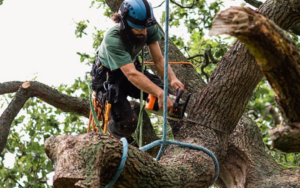Idaho Falls Movers are trained to pack up your belongings safely and efficiently. They can even disassemble and reassemble furniture as needed.
A reputable mover will take inventory of your stuff either in person or via virtual survey before giving you an accurate quote. They should also be members of an organization that judges their quality.
1. They Pack

When you hire full service movers to pack your belongings, they will arrive with all packing materials and get right to work. After a quick walkthrough and your agreement on what you want packed, they will begin by wrapping, boxing and labeling your items for the move. They are skilled at this part of the process, and can often do it more quickly and efficiently than you would on your own.
They will also be able to disassemble and reassemble larger furniture, and can do this for both local and long-distance moves. They will also know how to properly wrap fragile items, and will box them so that they can make it safely to their new homes. They will have the ability to pack all kinds of items, from kitchenware and artwork to knick-knacks and clothes. They are also able to pack large appliances and a variety of electronics, and will be able to pack them into boxes that will protect them during transport.
If you have kids or pets, it is best to leave them home during the packing process. This will help keep them safe and out of the way, and will prevent them from being sad or anxious during the process. If you can’t leave them alone, have someone watch them or take them on a walk to keep them entertained. It is also a good idea to provide snacks for the movers, as they will be working all day and may get hungry. They may also need easy access to water, so have a cooler with bottled water on hand.
There are a few things that movers will not be able to pack for you, including any open food containers (unless they are going across town) and certain chemicals. They can usually pack most anything else, though! If you have any special items that you want to be protected, be sure to put them in a separate “Essentials” box. This will contain important items like your keys, wallet, phone chargers and a few clean clothes, so that you have them on hand after the movers are gone.
2. They Drive
Moving companies usually have their own fleet of trucks and trailers to transport items from your home or business to your destination. They’ll typically charge extra if they have to travel long distances and need to make multiple trips or use an elevator to reach your building. And you’ll be hit with an additional fee if your home or office is on the second or third floor of an apartment or house, as it will be more difficult for your movers to lift heavy items up and down stairs.
Professional movers are well-versed in how to efficiently load and unload their vehicles. They also know how to handle special equipment like vehicle movers and dollies. This means they can get the job done faster and more efficiently than you could do it on your own.
Some moving companies offer specialized transportation services for specialty items or large appliances. They may even provide crates and other protective materials to ensure safe transit. Other moving services include route planning, GPS tracking, and logistics software to manage your move.
Another common service offered by movers is storage services. This can be useful if you’re moving out of a home but your new place isn’t quite ready, or if you’re downsizing from a five-bedroom house to a two-bedroom apartment and need to store the extra furniture somewhere else. Some movers even have their own secure storage facilities for added convenience.
In industrial settings, a vehicle mover is an electric device that allows you to drive up to a car on the production line and pull it off without shutting down the entire operation. This saves time and money since you won’t have to wait for someone to push or pull the vehicle by hand. A vehicle mover can also increase safety by offering more stability to the operator. This is especially important if you have a busy factory or garage where every minute counts during the production process.
3. They Unpack
One of the most time-consuming and difficult tasks associated with moving is packing your belongings. You want to ensure that everything is properly packed so that it fits into the right boxes, that fragile items are adequately protected, and that larger furniture pieces like beds and tables are disassembled where necessary for transport. Professional movers are skilled in all things related to moving, including packing, and they often do it much more efficiently than a typical homeowner could. Some moving companies even offer packing services that include disassembly of oversized furniture items upon arrival at your new home.
Once your belongings are packed, the movers will load them onto their truck and deliver them to your new location. This is a full-service move, and it takes care of every step from packing and inventory to loading and delivering your belongings to their final destination. This is a great option for those who have time constraints or who are not comfortable with moving and packing themselves.
On the other hand, you might only need a partial pack and unpack service. In this case, movers will pack only your belongings that require packing, label them and place them in the appropriate cartons. When you arrive at your destination, they will unpack the cartons and put your belongings away. They will also dispose of the boxes and any other packing materials.
Before movers arrive, it is helpful to have a plan of where large furniture pieces and appliances will go in your new home. This will save you a lot of time and hassle when the movers are there. It is also a good idea to declutter and get rid of items you no longer need, as this will save you space in the moving process. It is also a good idea to communicate your packing and unpacking preferences to the movers in advance.
It is also a good idea to make sure you have a set of tools handy, such as a hammer and screwdriver. Unless you are hiring full-service movers, most do not carry tools, so if there is a problem with an appliance or piece of furniture upon arrival at your new home, you will need to be able to fix it yourself. Finally, you should prepare a list of essential items to take with you during your move, such as important documents, jewelry, and cash. This will keep these items safe from harm while you are in transit and make it easier for you to access them when needed.
4. They Cross Borders
When movers cross borders, the logistics of the move can change dramatically. Whether the move is a domestic one or a global one, customs clearance needs to take place. The process may be impacted by weather, holiday traffic, or seasonal conditions. For example, a winter snowstorm or floods in a destination country could delay shipments for days. Busy seasons, like summer vacations, can also increase traffic and cause delays.
Moving a long distance is no small undertaking. It’s expensive, physically challenging, and time-consuming. The best way to minimize the stress and costs of moving is to work with a full-service mover that offers packing services.








